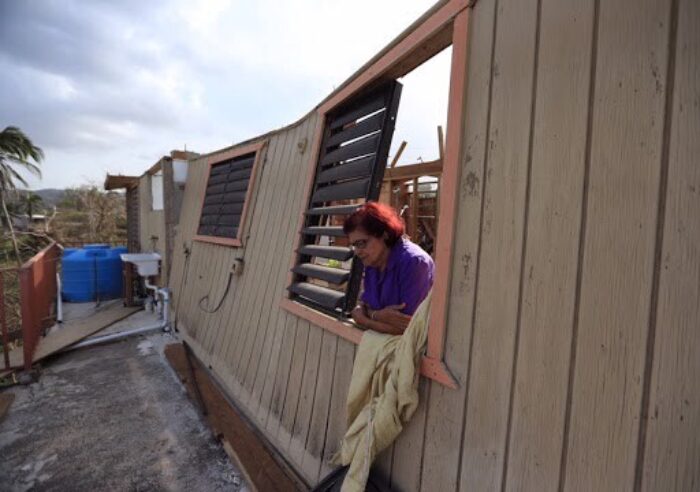Harvey, Maria, Katrina — the names everyone talks about… yet there are thousands of un- or underinsured, low-to-moderate income families still struggling to recover from the damage inflicted by these and other disasters. Their difficult disaster-recovery experiences are largely the result of a protracted and complicated federal disaster recovery assistance process that often fails to meet the needs of those most in need and for whom it was designed to serve — corporate philanthropy can help.

Problems for the disaster-affected begin with an application for Individual Assistance (IA) payments from FEMA, which are meant to cover immediate needs such as housing and clothing. The application is so confusing and daunting, however, that many unwittingly self-select out of the program. Changes to the damage assessment process present further difficulties. Now done via a call-in system because of COVID-19, homeowners self-report their damages. Not being trained in how to properly conduct such an assessment, however, they typically under-estimate the cost of the damages. Their inexperience is reflected in the significant drop in the average award size from FEMA — after Hurricane Michael in October, 2018, the average FEMA award was $3,917; the average award after Laura in August, 2020 was just $1,900.
Perhaps the most troublesome problem for these folks though is the two- to four-year time lag between the receipt of IA payments and the award of funds to rebuild their homes known as Community Development Block Grants for Disaster Recovery (CDBG-DR). While a detailed explanation for the painfully long wait is beyond the scope of this blog, suffice it to say that it’s the result of a complicated, issue-laden, bureaucratic process that involves the US President, Congress, FEMA, HUD, and state and local governments.
While they wait, and wait, and wait homeowners have a number of undesirable housing options, including: 1) living in their damaged home; 2) living with family or friends; 3) living in a trailer provided by FEMA (if they are available); or 4) renting a house, that is, if they can afford to while still paying their mortgage.
The characteristic long wait between receipt of IA and CDBG-DR awards is well documented. In Houston and Puerto Rico, for example, though the respective hurricanes struck over three years ago, fewer than 300 homes have been rebuilt with CDBG-DR funds.
Extensive delays are common as well — reconstruction in New Jersey and New York is still taking place after Hurricane Sandy destroyed areas of these states over eight years ago, and the program lingered for more than 12 years in New Orleans following Hurricane Katrina.
At SBP, we are working around the long wait for CDBG-DR awards to come through, thus reducing the negative effects recovering from a natural disaster can have on people’s lives. For instance, we’re setting up a Disaster Recovery Acceleration Fund, through which we’ll loan money to disaster-affected low-income homeowners based on being re-paid when they receive their CDBG-DR award. As we work around the faults in federal disaster recovery programs, corporate philanthropy has an opportunity to work through them taking one or more of the following four actions:
- Fund programs that help to rebuild communities following natural disasters — particularly those run by organizations that commit to actually doing the rebuilding for at least three years. This will help to put folks back in their home more quickly and get the community up and running again, thereby re-establishing markets.
- Fund programs that prepare communities for natural disasters, thus help to reduce the physical, economic, and social destruction they cause and thereby decreasing the need for both relief and re-building, i.e. it can be a more efficient use of funding.
- Collaborate with your company’s government relations team and community leaders to advocate for state governments to include repairs homeowners self-fund including, e.g. labor, materials, and loans as reimbursable expenses in the recovery action plan they create to outline how the CDBG-DR funds will be used. This would help to reduce homeowners’ wait and the cost of additional damages that tend to occur during the wait.
- Collaborate with your company’s government relations team to lobby the US congress to address the problems with FEMA’s disaster assistance programs. For example, by enabling FEMA to use flyover imagery to calculate awards, which can improve the accuracy of damage assessments and speed up the receipt of awards.
Any one of these actions would strengthen the disaster recovery ecosystem, and such fortifications are needed considering the upward trend in the frequency of natural disasters with multi-billion dollar price tags — a trend that is indeed very likely to continue. Equally important, these actions will address the disparate impact natural disasters have on vulnerable homeowners; people whose lives are being irreparably altered by the extensive wait for federal funds to be put to the use for which they were intended.
Liz McCartney is the Co-founder and Chief Operating Officer of SBP
This blog was originally published by The Conference Board in connection with optimizing the effectiveness and impact of companies’ corporate citizenship programs.

